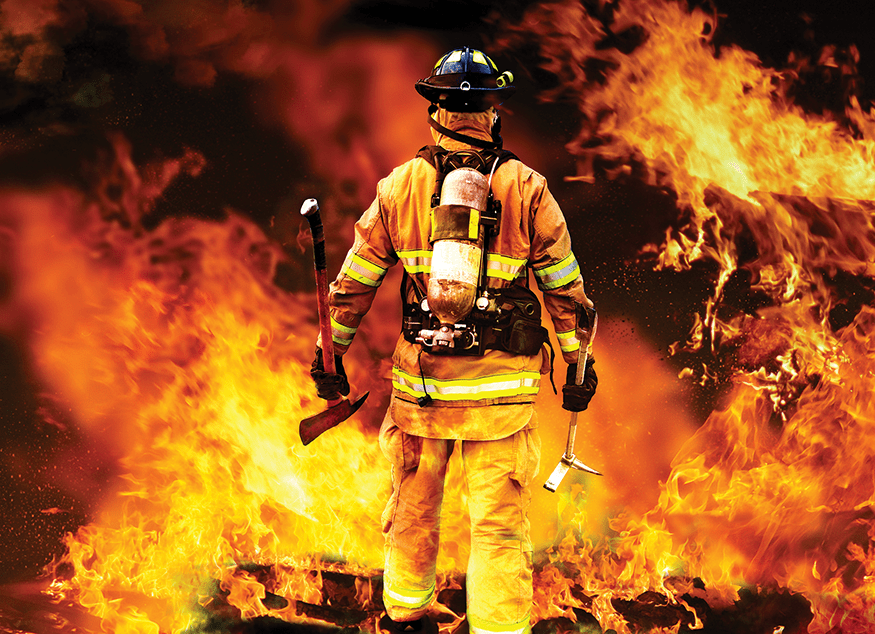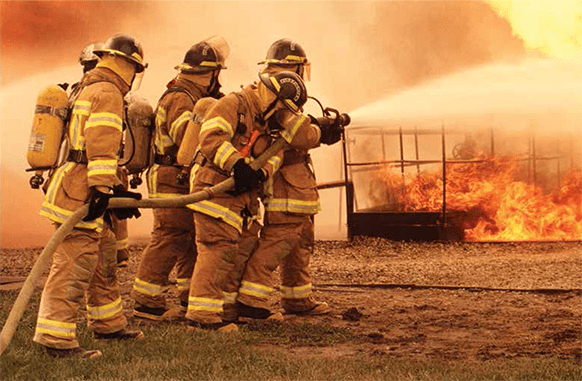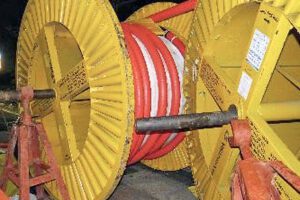Identifying fire risks and understanding the various mitigation measures that can be employed is vital to the safe and efficient operation of any mine site, writes Joseph Keller from the Fire Protection Association of Australia.
While fire in the community is always a serious and potentially deadly threat, on a mine site the consequences can be especially catastrophic. The hazardous nature of most mining operations, coupled with the remoteness of many mine sites, means that site operators must exercise the highest levels of care with regard to fire protection in order to safeguard lives, mining equipment, property and the environment.
This duty of care extends beyond mine site management who are tasked with ensuring the overall safety of all personnel and visitors on site. The responsibility for fire safety on mine sites extends to every person on site including; fire protection contractors tasked with inspecting, testing and maintaining fire protection systems and equipment, site staff, (both those directly involved with the mining operation as well as support staff) as well as guests and visitors to the site. Everyone must be alert to the risks of fires and other special hazards on mine sites and be able to identify some key warning signs.

This article highlights five key points for consideration regarding fire safety on mine sites as well as providing some tips on how to combat these issues and ensure you and your staff are safe from fire and related emergencies while on site.
Readers please note – each site will have unique requirements and may present unique fire and hazard risks. This article is intended to provide general information only and should not be taken as a guide to fire safety on any individual mine site. Always follow the stipulated Occupational Health and Safety (OH&S) and site safety instructions required on site and adhere to all guidelines as determined by the site safety supervisor.
Personnel awareness and understanding the use of fire protection systems and equipment

In many potential fire emergencies, situational awareness (ie. a sound awareness of ones surroundings), can mean the difference between a fire starting and not, or the difference between a small manageable fire and a large and devastating one. This might be as simple as personnel recognising that a piece of mobile plant equipment is getting particularly hot, sparking or overloading and should be deactivated or moved, or that material stacked in a storeroom presents a high fuel load and should be re-arranged, for example. This type of preventative action can stop dangerous fires from starting in the first place. If a fire does start, be it on the worksite itself or on a piece of equipment, it is critical that site personnel have an understanding of what measures to take and how the installed fire protection systems and equipment are designed to operate. Fires Protection (FPA) Australia Learning & Development Specialist Mr Bob Goninon, said one of the best things mine site personnel can do to reduce their fire risk is familiarise themselves with the fire protection systems and equipment in their work space.
“Today, the modern mining environment is usually very well protected against fire, but it is critical that individuals on site understand how to operate fire protection systems and equipment if required,” he said.
“This may be as simple as understanding where the portable fire extinguishers are located and which extinguisher is appropriate for which kind of fire. Alternatively it could mean having a good understanding of the operation of the complex fire suppression system installed on a haul truck.”
Mr Goninon encouraged site personnel to pass their eye over fire protection systems and equipment in their working area at the commencement of every shift as part of their pre-start routine.
“A good example of where this type of routine checking can be critical relates to fire protection systems on haul trucks.”
“If there is thickly caked mud around the system, particularly near the indication equipment, then the response time for the system to activate may be delayed. If the system is very badly blocked by mud or debris, it may fail altogether. Due diligence is required on the part of personnel to check that fire protection systems and equipment are in good working order, remembering it could save their life or the life of a workmate.”
Adherence to site safety guidelines including site specific requirements
Like any workplace, mine sites have their own unique OH&S requirements. These are usually enshrined in legislation that carries significant penalties if not followed by site operators. This means that a significant amount of risk, including fire risk, is automatically mitigated by simply adhering to the strict safety guidelines in place on site.
Mr Goninon said the most effective way to protect yourself and others on site is to simply observe all of the site safety requirements that are always outlined in detail to all site staff and visitors.
“Today, many sites have their own versions of ‘take 5’ safety booklets (or similar) which are required to be read and carried by all personnel on site. Adherence with site OH&S requirements, including reading and understanding the site safety directory or other ‘pocket’ guide may dramatically reduce the risk of fire or special hazard emergencies from occurring. In the event a fire emergency does occur, a good understanding of the site requirements for emergency management and evacuation procedures is also vital.”
Ensuring correct servicing of fire protection systems and equipment by trained professionals
As in all applications, fire protection systems and equipment installed on mine sites may only have to operate, or be operated, very infrequently. However,  in such a situation it is critical that the system or piece of equipment works as designed and ultimately protects lives as well as valuable equipment. While fire protection systems and equipment may appear to be in good working order from the outside, only a trained professional will be able to ensure that fire safety measures, such as fire suppression systems or portable fire extinguishers, will work correctly when they are needed.
in such a situation it is critical that the system or piece of equipment works as designed and ultimately protects lives as well as valuable equipment. While fire protection systems and equipment may appear to be in good working order from the outside, only a trained professional will be able to ensure that fire safety measures, such as fire suppression systems or portable fire extinguishers, will work correctly when they are needed.
Mr Goninon said one of the most common examples of this issue related to dry chemical portable fire extinguishers.
“The extinguishing powder inside a dry chemical portable fire extinguisher will cake together and harden over time. This hardening can affect the performance of the extinguisher, to the point of it becoming completely inoperable. Due to the nature of the fires on mobile equipment, such as haul trucks, dry chemical extinguishers are often used. In these cases the constant shaking of the extinguisher due to the movement of the truck can increase the speed of the caking problem, but from the outside the extinguisher might appear to be in perfect order.
“With this in mind mine site operators should be very careful when selecting the company or individual who will be responsible for the ‘inspect and test’ activities on fire protection systems and equipment at their site. Only appropriately trained individuals should be allowed to work on life saving fire protection measures in any situation, but on a mine site where the consequences of a fire incident are intensified, it is even more critical that individuals inspecting and testing this equipment are competent.”
FPA Australia has recently launched an accreditation scheme for individuals undertaking inspect and test activities on fire protection systems and equipment and those businesses that support them. The Fire Protection Accreditation Scheme (FPAS) is the only independent, national benchmark for the competency of fire protection technicians working in Australia. To ensure individuals have appropriate training to undertake inspect and test activities on-site and their business holds all of the appropriate insurances and has signed the FPA Australia Code of Practice, site operators and managers who require fire protection services should choose an FPAS Recognised Business wherever possible.
Changes in environmental conditions

Beyond the human factors that have already been discussed, changes in environmental conditions can dramatically affect both the chances of fires occurring on site and the potential for effective operation of fire systems and equipment. For example as mentioned, heavy rains can cause mud to form around fire suppression systems on vehicles. If not cleaned immediately the mud will harden and can impact the functionining of vital equipment. Extremely dusty environments can lead to fire detection systems issuing false alarms. If not cleaned, over time extreme dust can also contaminate fire detection equipment and cause the equipment to no longer function correctly.
Finally, on particularly hazardous sites such as oil platforms, power generation facilities, natural gas extraction sites, or uranium mining operations, changes in environmental conditions can create particularly hazardous scenarios. In these kinds of very hazardous environments, the requirements to follow all fire safety instructions on site becomes all the more paramount, as does the diligence required to ensure all systems and equipment are operating effectively. Special fire protection systems and equipment exist for operation in hazardous and harsh environments and these must only ever be serviced by individuals with specific knowledge of these complex systems.
Ensuring an adequate understanding of accidental discharge and scheduled gasses
From time to time fire protection systems and equipment may be accidentally activated on mine sites. This can be problematic particularly when scheduled gasses are involved.
Scheduled gases are those extinguishing agents that can have a damaging effect on the environment, these types of extinguishing agents are referred to as Ozone-Depleting Substances (ODS) and Synthetic Greenhouse Gases (SGG). Some extinguishing agents, such as Halon or hydro-chloro-flourocarbons are both ODS and SGG, while other extinguishing agents such as hydroflourocarbons (e.g. FM-200) are SGG but not ODS.
Schedule 1 of the Ozone Protection and Synthetic Greenhouse Gas Management Act 1989 (the Act) provides a complete list of scheduled ODS and SGG substances which are covered by the Act, but in mine site operations the gases most typically present will be FE227™, FM-200®, NAFSIII and NAFPIII. These gases may be found in both fixed and mobile fire suppression systems and equipment. Examples of mobile equipment where these gases may be present include large excavators, shovels, draglines, haul trucks and wheeled loaders.

Twitter: @fpaaustralia or @joseph_Keller
When an accidental discharge of any fire suppression system occurs, there can be significant downtime while the machinery or equipment is cleaned and
the fire suppression system or equipment is reset. If no re-fill of suppression system gas is available nearby, equipment may be out of action for days or weeks while new gas is brought to the site, either by road freight or special charter. This means that staff on site should be particularly careful not to accidentally discharge or damage fire protection systems and equipment.
Many mining facilities involve the full range of special hazard installations. In the case of machinery protection, such as the types of vehicles mentioned above, Halons have been systematically superseded by dry chemical/wet chemical ‘twin-agent’ systems, foam systems and inert gas systems.
These systems can often contain scheduled gasses such as FE227™, FM-200®, NAFSIII and NAFPIII. Scheduled gases can only be handled legally byindividuals that hold the relevant Extinguishing Agent Handling Licence. If an accidental discharge of a scheduled agent does occur, The Fire Protection Industry (ODS & SGG) Board must be formally notified. With all this in mind, mine site operators and staff should be diligent to ensure that accidental discharge of fire protection systems and equipment is kept to an absolute minimum, in particular where the systems contain scheduled extinguishing agents.
This article has outlined just some of the important considerations regarding fire protection and safety on mine sites including fire protection systems and equipment and their operation on both fixed and mobile equipment. For more information regarding the Fire Protection Accreditation Scheme (FPAS) outlined in this article, please visit www.fpaa.com.au/fpas. For information regarding scheduled gases and all relevant licenses and permits or report an Accidental Discharge please contact ozone@fpaa.com.au or call 1300 731 922.














Add Comment